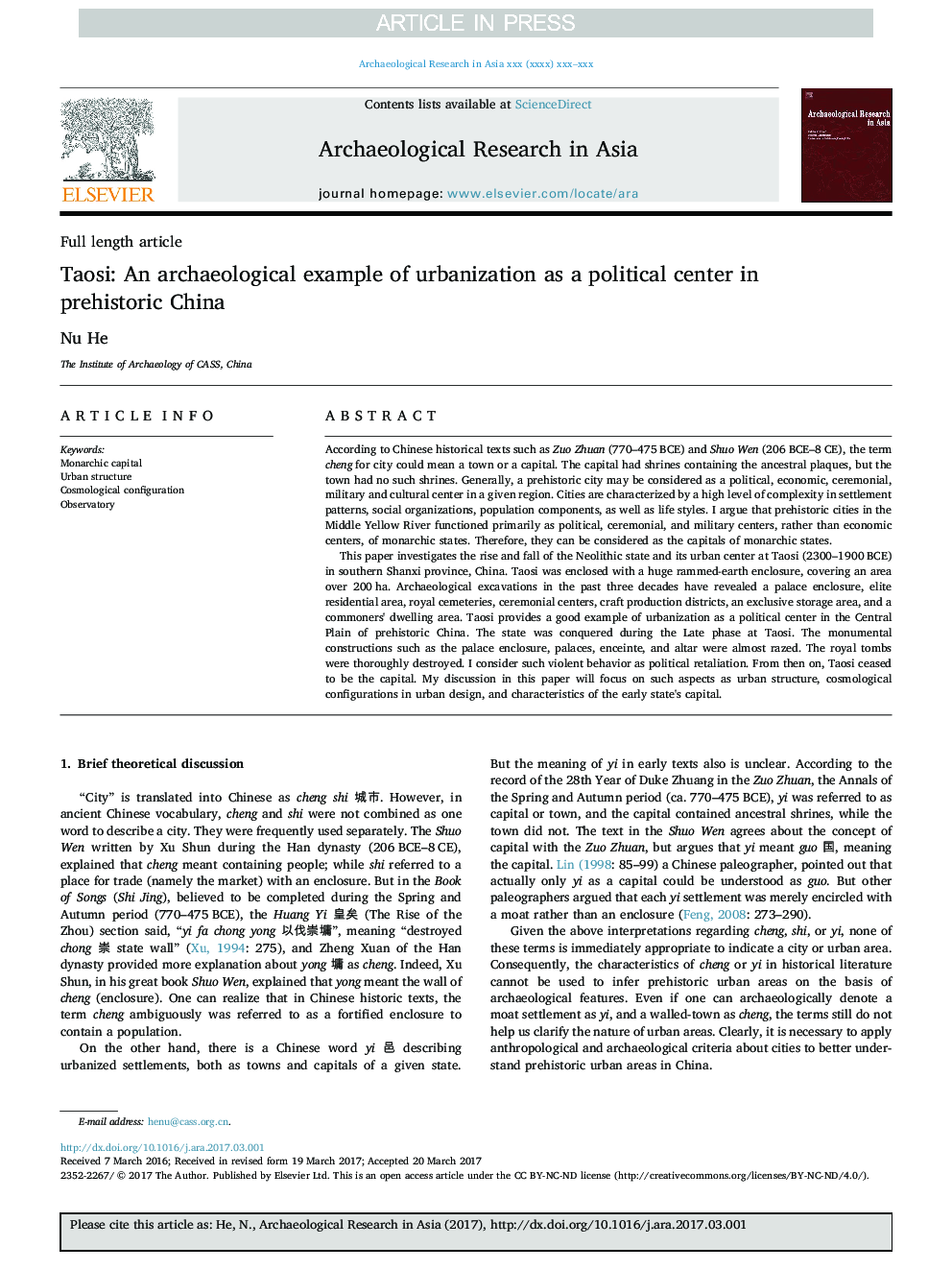| Article ID | Journal | Published Year | Pages | File Type |
|---|---|---|---|---|
| 7440093 | Archaeological Research in Asia | 2018 | 13 Pages |
Abstract
This paper investigates the rise and fall of the Neolithic state and its urban center at Taosi (2300-1900Â BCE) in southern Shanxi province, China. Taosi was enclosed with a huge rammed-earth enclosure, covering an area over 200Â ha. Archaeological excavations in the past three decades have revealed a palace enclosure, elite residential area, royal cemeteries, ceremonial centers, craft production districts, an exclusive storage area, and a commoners' dwelling area. Taosi provides a good example of urbanization as a political center in the Central Plain of prehistoric China. The state was conquered during the Late phase at Taosi. The monumental constructions such as the palace enclosure, palaces, enceinte, and altar were almost razed. The royal tombs were thoroughly destroyed. I consider such violent behavior as political retaliation. From then on, Taosi ceased to be the capital. My discussion in this paper will focus on such aspects as urban structure, cosmological configurations in urban design, and characteristics of the early state's capital.
Keywords
Related Topics
Social Sciences and Humanities
Arts and Humanities
History
Authors
He Nu,
